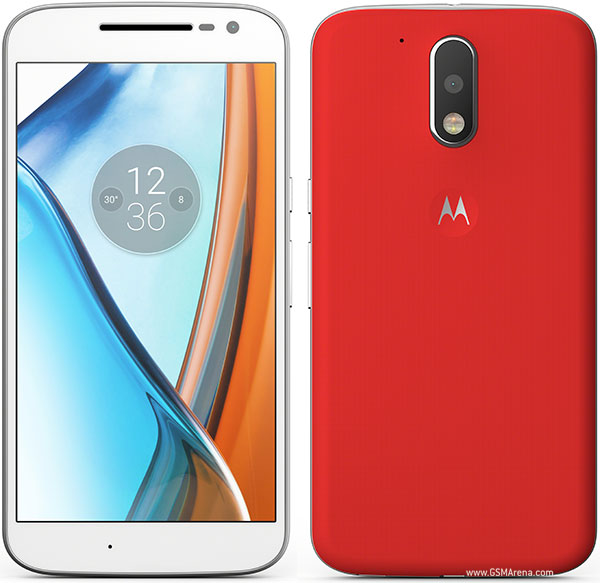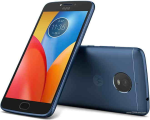
Motorola Moto G4 Prices
Important Note.
- All prices are in Pakistani Rupee (PKR)
- Prices may vary at stores and our effort will be to provide you with the updated prices.
- The latest price of Motorola Moto G4 was obtained on 17 مئی, 2019. The prices at the original stores had been updated on the respective mentioned dates.
- Find out WhatMobile price has dropped in Pakistan by selecting Notify Price Drop button
- Find out WhatMobile has better specifications by clicking Add To Compare Button find out what Mobile has better reviews by visiting our reviews section
- Find out WhatMobile is cheaper on which retailer by clicking Compare prices from retailers button
Search Terms
- Motorola Moto G4
Specifications
| GENERAL | |
| 2G Network | GSM 850 / 900 / 1800 / 1900 - SIM 1 & SIM 2 (dual-SIM model only) CDMA 800 / 1900 - XT1625 |
|---|---|
| 3G Network | HSDPA 850 / 900 / 1900 / 2100 - XT1622 HSDPA 850 / 900 / 1700(AWS) / 1900 / 2100 - XT1625 |
| 4G Network | LTE band 1(2100), 3(1800), 5(850), 7(2600), 8(900), 19(800), 20(800), 28(700), 40(2300) - XT1622 |
| Sim | Single SIM (Micro-SIM) or Dual SIM (Micro-SIM, dual stand-by) |
| Announced | 19/05/2016 |
| Status | Available. Released 2016, May |
| BODY | |
| Dimensions | 153 x 76.6 x 9.8 mm (6.02 x 3.02 x 0.39 in) |
| Weight | 155 g (5.47 oz) |
| DISPLAY | |
| Display Size | 5.5 inches, 83.4 cm2 (~71.2% screen-to-body ratio) |
| Resolution | 1080 x 1920 pixels, 16:9 ratio (~401 ppi density) |
| MultiTouch | Yes |
| Protection | Corning Gorilla Glass 3 |
| SOUND | |
| AlertTypes | Vibration; MP3, WAV ringtones |
| LoudSpeaker | Yes |
| 3.5mm jack | Yes - Active noise cancellation with dedicated mic |
| MEMORY | |
| CardSlot | microSD, up to 256 GB (dedicated slot) |
| Internal | 16 GB, 2 GB RAM |
| DATA | |
| GPRS | Yes |
| EDGE | Yes |
| Speed | HSPA 42.2/5.76 Mbps, LTE Cat4 150/50 Mbps |
| WLAN | Wi-Fi 802.11 a/b/g/n, dual-band, WiFi Direct, hotspot |
| Blue Tooth | 4.1, A2DP, LE, aptX |
| USB | microUSB 2.0, USB Host |
| CAMERA | |
| Camera Primary | 13 MP, f/2.0, autofocus, dual-LED dual-tone flash, check quality |
| Camera Features | Geo-tagging, touch focus, face detection, panorama, auto-HDR |
| CameraVideo | 1080p@30fps, HDR, check quality |
| CameraSecondary | 5 MP, f/2.2, auto-HDR |
| FEATURES | |
| Processor Cores | Octa-Core |
| OS | Android 6.0.1 (Marshmallow), upgradable to 7.0 (Nougat) |
| CPU | Octa-core (4x1.5 GHz Cortex-A53 & 4x1.2 GHz Cortex-A53) |
| Sensors | Accelerometer, gyro |
| Messaging | SMS(threaded view), MMS, Email, Push Email, IM |
| Browser | HTML5 |
| Radio | FM radio |
| GPS | Yes, with A-GPS, GLONASS, BDS |
| Java | No |
| Colors | Black, White |
| Others | - Fast battery charging - MP3/AAC+/WAV/Flac player - MP4/H.264 player - Photo/video editor - Document viewer |
| BATTERY | |
| Battery | Non-removable Li-Ion 3000 mAh battery |
| MISC | |
Reviews

May 17 2016 is the day Lenovo, owner of Motorola, unleashed the first batch of smartphones for the year under the Moto brand with a revamp of the affordable Moto G series - there are actually two smartphones in this 2016 generation; the Moto G4 and the Moto G4 Plus. Contrary to the usual use of that naming convention, the Plus isn't a bigger phablet model, it is in fact the same size, but it features a few extra capabilities and a slightly higher spec. The Motorola and Lenovo names may be nowhere to be found on the handsets but rest assured that Motorola still exists as part of the Lenovo corporation and is still responsible for developing these phones. The Moto brand, it seems (shown by the "M" logo on the back) is being treated a bit like fellow Chinese firm Huawei's Honor brand, the only words you see are Honor, or in this case Moto, and they want the brand to stand very much on its own, but we known who is actually behind the devices at the end of the day.
You may have noticed we said "first batch". We were a little disappointed to only see the Moto G4 and Moto G4 Plus without any of the rumoured Moto X flagship models, but to be fair it wouldn't be the first time the Moto series has undergone a staggered launch for the affordable and flaghip brackets. There's still no confirmation that a new Moto X (allegedly another pair, actually) is definitely coming, but we've seen enough evidence to believe that a launch isn't far off at all.
Anyway, back to the Moto G4 and Moto G4 Plus. We've been lucky enough to have some hands-on time with the duo so here is our first impression.
We'll mainly be talking about the Moto G4 Plus, because for the most part the two phones are the same, the Moto G4 just has a slighly lower spec in some very specific ways and loses a few features, such as the front-mounted fingerprint scanner.
Moto G4 Plus/Moto G4 Design & Display
A straightforward glance at the Moto G4 series and it must be said it is not exactly a spectacular looking phone, but then again anyone expecting it to be is perhaps barking up the wrong tree - this is an affordable handset ranging in its various iterations from the sub-£200 bracket. That said, there is a certain practical charm about it and it's not too surprising given Motorola's past affiliation with Google that there's more than a passing resemblance to the Google Nexus line. In some ways it's as if the previous generation of Moto handsets cross-bred with a Nexus 5 and this is what we got, it still has a distinctive sweeping curved design to the top and bottom ends but is now much larger, and the screen takes up a good proportion of the fascia.
Of course the entire build is plastic, but it seems to be of decent quality with a pleasing finish, and the phone has a solid feel in the hand. I was quite impressed at how thin and lightweight the handset seemed compared to previous Moto G models, which have always leaned on the chunkier side. The back panel has a textured finish which aids grip and it is removable to access the battery cell and card slots.
There's a punched mesh speaker grille at the top of the handset's face and on the back we see a return of the familiar pill-shaped camera and flash port array protruding slightly with the Moto "M" in a circle just below. It's all very neat and tidy.
True to previous Moto launches the Moto G4 and Moto G4 Plus will be available via the Moto Maker webstore where users can customise their device; there's eight back panel colours to choose from and five metallic accent colours, while the front panel is either black or white. Our hands-on time was with the regular non-customised black edition but we've seen images of a white and red handset and it does look far more impressive.
Both handsets feature the same 5.5in 1080p LCD display at 401 pixels-per-inch which is nice and sharp with impressive colour, viewing angles also seem very wide and the brightness levels are decent. This isn't the first time this series has had me wondering whether it was AMOLED until I looked at the spec sheet.
Moto G4 Plus/Moto G4 Hardware, Processor & Battery
Both handsets are equipped with the exact same processor and battery hardware - Qualcomm's Snapdragon 617 octa-core CPU (MSM8952) based around eight ARM Cortex-A53 cores clocked at 1.5GHz, with an Adreno 405 GPU clocked at 550MHz, which is quite a lot of grunt for a budget-leaning model and twice as many cores as the previous generation. The battery is a sizeable 3,000mAh cell and supports rapid charging, while every model has microSD support for cards up to 128GB. The hands-on session was very brief, so I didn't get a chance to really put the handset through its paces, but with that said, the stock Android 6.0.1 sofware isn't bogged down by bloatware and it felt very smooth and responsive on both models. The Moto G4 and Moto G4 Plus have different RAM setups depending on the storage model, but I'll cover that in a moment.
In terms of connectivity you've got a 3.5mm headphone jack, microUSB, micro-SIM with full 4G LTE support, 2.4GHz and 5GHz Wi-Fi, GPS and Bluetooth 4.1 LE.
Moto G4 Plus/Moto G4 Software
As mentioned, the Moto G4 and Moto G4 Plus run Android 6.0.1 Marshmallow in a stock setup which is great for running speeds, but also as the UI is so attractive and intuitive just left vanilla. Plus it packs all the built-in features Google has squeezed into its latest builds, like a fantastic little drop-down settings menu, a great multitasking suite, battery optimisations via Doze, and much more besides. Also, being a Moto series device you can expect the support to be pretty good for some time to come as the family regularly gets updated to new Android builds in a similar timeframe to Google's Nexus range - as it's stock there's really not a lot to do other than roll it out the door!
Again we only had a brief bit of time with the Moto G4 range but it was really refreshing to see stock Android and it was simply a joy to whip around the various screens and menus with absolutely zero fuss or complication.
Moto G4 Plus/Moto G4 Camera
The camera on the lead Moto G4 Plus model is a significant upgrade on older Moto G handsets and quite far removed from what we've come to expect of "budget" hardware. We're looking at a 16MP sensor with phase detect autofocus and laser focus, an f/2.0 aperture (the kind that was aboard flagships only about a year ago), dual-LED flash, manual "Professional" mode and 1080p video capture. I couldn't get hold of the image I captured to publish here, but I was impressed by he clarity and richness of colour this camera produces. The Moto G4 model has a 13MP camera instead and with a shorter list of features, so undersandably imaging quality isn't going to be quite as impressive. Both handsets have a 5MP front-facing secondary with an f/2.2 aperture and an 84-degree wide-angle lens for group shots.
Moto G4 Plus/Moto G4 Price, Availability & Storage Options
The Moto G4 will be available from early June Sim-free from the Moto Maker webstore where it can be customised, or via Amazon, Argos, and Tesco in a selection of colour opions. The Moto 4G is only available in a 16GB storage model with 2GB of RAM with a price tag of £169.
The Moto G4 Plus will arrive in mid-to-late June via Moto Maker and as an Amazon exclusive starting at £199. There are three variants with 16GB storage/2GB RAM, 32GB storage/3GB RAM, and 64GB storage/4GB RAM, however, we heard from Lenovo/Moto reps that the 64GB edition will not be coming to the UK.
Write Your Own Review
My Recent Reviews
- Be first to post review for this product.
comments powered by Disqus


























.jpg)






















